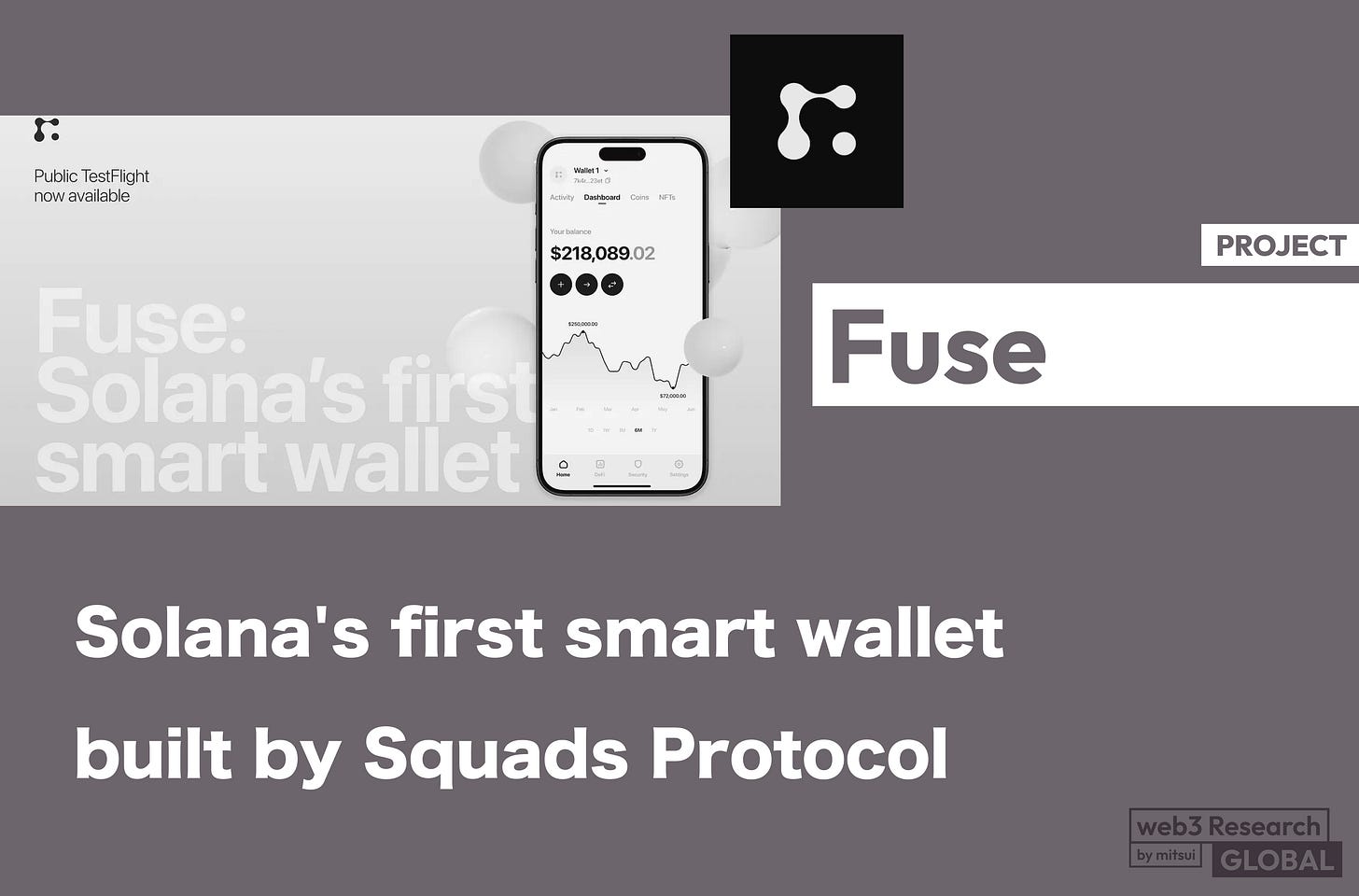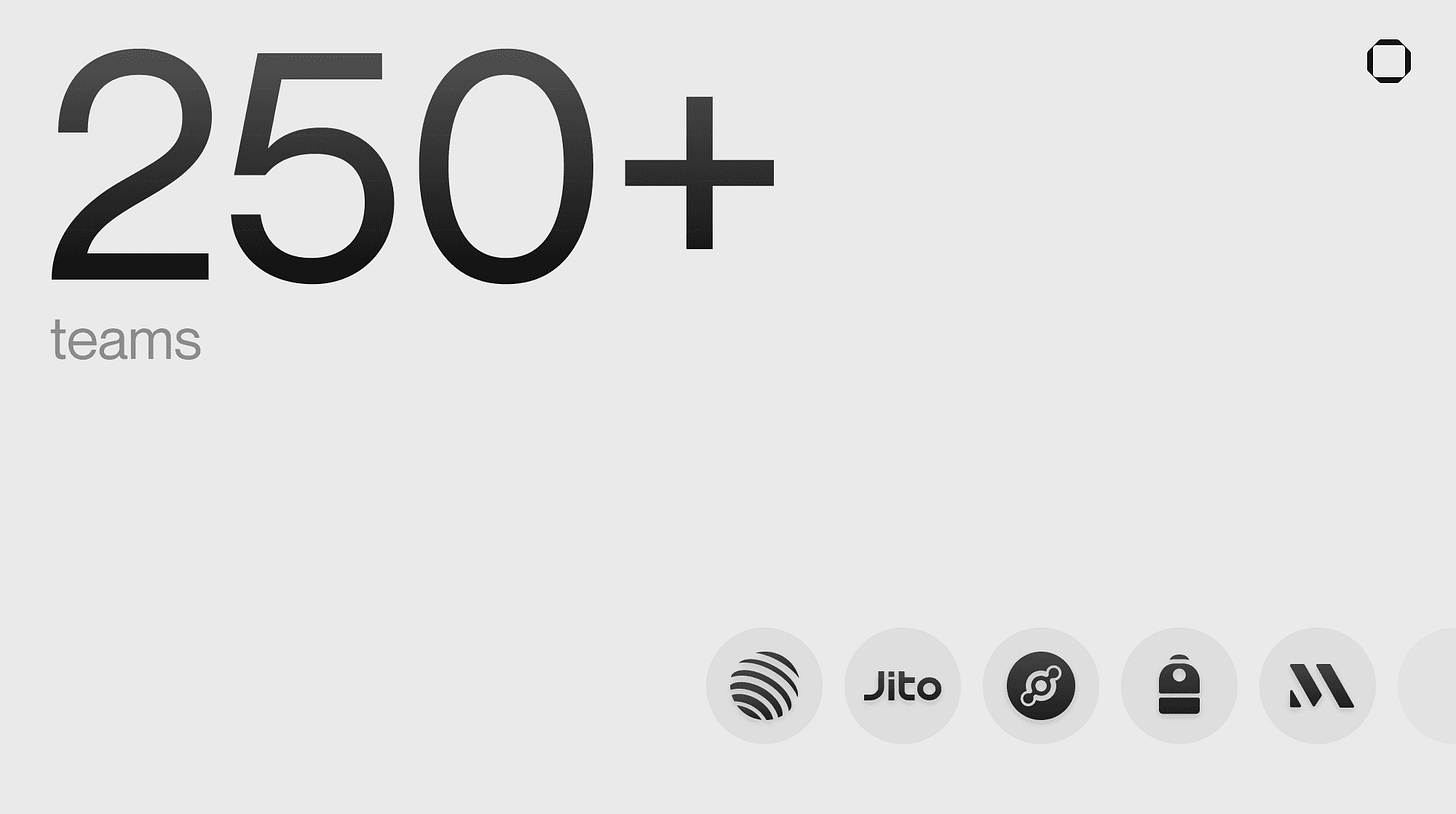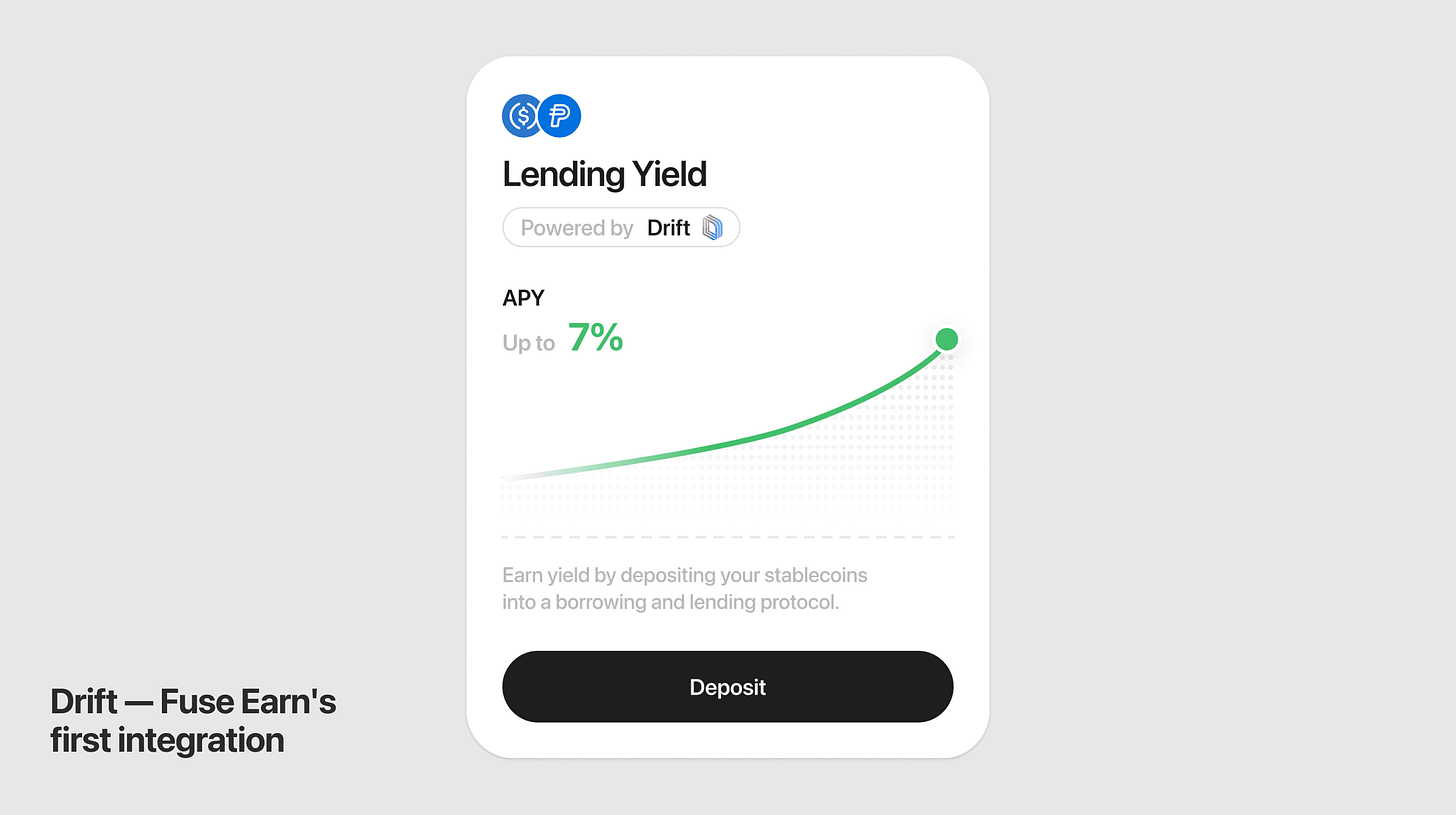【Fuse】Solana's first smart wallet built by Squads Protocol / fuseSOL, Fuse Pay, Fuse Earn, Paymaster, and more / @fusewallet
Squads Protocol, which used to offer enterprise services, now builds a smart wallet for individuals.
Good morning.
Mitsui from web3 researcher.
Today we researched Fuse.
👛What is Fuse?
⚙️ specific features
💬Wallet Wars are happening
👛What is Fuse?
Fuse is Solana's first smart wallet.It requires no private key management and offers advanced security features such as two-factor authentication, recovery, spending limits, and key rotation.You can also exchange and stake assets within Fuse, and native DeFi integration allows you to control your favorite apps from the security of your smart wallet.
The company built Squads Protocol, which deploys a multi-sig wallet for enterprises.It is Solana's primary solution for storing a total of more than $10 billion and helps simplify on-chain management for enterprises.
Currently, over 250 teams including Jupiter, Jito, Helium, Backpack, and Metaplex use the Squads app to run their operations on-chain.
Fuse is a smart wallet built on the Squads Protocol, combining the security of the Squads app with a seamless experience optimized for individual users With Fuse, individuals enjoy the same enterprisebenefits of smart accounts and enterprise-level security.
⚙️ specific-functions
Now let's look at more specific functions.
Key management is as described above, and it supports 2-step verification and recovery.The rest of the basic functions of a wallet, such as receiving tokens, sending tokens, swapping, etc., are included.
Here is a little more information on some of the unique features.
(1) Native LST "fuseSOL"
Solana can be staked directly from within the wallet application.There are two staking options: native staking with Squads Validator or liquid staking with fuseSOL. fuseSOL is an LST, which means that you get the rewards of staking, but the funds are not locked.fuseSOL is an LST, so it inherits the characteristics of an LST where funds are not locked up while earning staking rewards.
(2)Paymaster
The next function is Paymaster.This feature allows the user to shoulder the payment of the gas bill during a transaction, and is sometimes employed by AA-adopted smart wallets.While most features generally allow the business, the app provider, to shoulder the gas bill, Fuse provides a feature that allows users to pay for gas with their fuseSOL.
Simply deposit fuseSOL into your gas account for Paymaster, and it will pay for the gas at the time of the transaction from there.
In the future, they may be able to make payments with tokens other than fuseSOL (e.g. USDC) or on the shoulder of the operator.
(3) Native DeFi operation "Fuse Earn"
This system allows you to operate tokens without leaving the Fuse app.The first partner has partnered with Drift and is now able to operate stable coins.
Fuse is integrated with Drift's Lend/Borrow product, where assets are deposited into Drift and automatically earn a yield; Fuse Earn allows USDC and PYUSD to be deposited directly from the Fuse wallet into Drift's lending product.
(4) Visa prepaid card "Fuse Pay"
There is a prepaid card system, Fuse Pay, which allows you to pay at Visa merchants from your Fuse Wallet balance.
This is being launched in partnership with Bridge and allows prepaid card setup that inherits the flexibility of the Smart Account, including the ability to adjust daily spending limits at any time.
These are the main features.Fuse is currently available for download from the Apple Store.
Fuse also charges a 0.05 SOL annual fee.This is billed annually and does not auto-renew.This fee supports ongoing development and infrastructure costs and recoups the subsidized smart account implementation fee through wallet creation.If you choose not to pay the annual fee, you will still be able to use the basic functionality of the app, such as sending assets and changing keys.
💬Wallet wars are happening
The last is a consideration.
Fuse seemed to be a very user-friendly wallet.It is true that Solana has other wallets such as Phantom and Backpack, but they are all EOA wallets that require private key management.In this respect, Fuse is a smart wallet that does not require private key management and seems easy to use for beginners as well as web3 natives.
The presence of LSTs in the wallet and the existence of a paymaster function that utilizes LSTs were unique, but I believe that this kind of movement is likely to accelerate.
Coinbase is also offering a feature that allows wallet holders to have USDC and offer a yield for holding USDC alone.
Offering this creates an incentive to hold their own LSTs and stablecoins, and also increases the convenience of the wallet, which increases the cost of switching to the competition.
For example, if fuseSOL receives a 1% commission on the staking yield and returns 7% to the user, the LST management fee is also a means of monetizing the wallet.The UI should be prominently placed to encourage ownership of the fuseSOL, and a seamless UX should be built to allow staking from within the app, as well as the ability to shoulder the cost of gas.This will create an incentive to own a fuseSOL for convenience.
This cycle increases the wallet's profitability and switching costs, and from the user's point of view, it is mutually beneficial because it increases convenience.
As I mentioned in my previous Fat Wallet theory, we are now in a wallet war.Personally, I believe that it will be important to design not just a wallet, but how to include a loop that increases switching costs while increasing convenience for the user.
We will continue to investigate any interesting wallets.
This is our research on "Fuse"!
🔗Reference/image credit: HP / X
Disclaimer:I carefully examine and write the information that I research, but since it is personally operated and there are many parts with English sources, there may be some paraphrasing or incorrect information. Please understand. Also, there may be introductions of Dapps, NFTs, and tokens in the articles, but there is absolutely no solicitation purpose. Please purchase and use them at your own risk.
About us
🇯🇵🇺🇸🇰🇷🇨🇳🇪🇸 The English version of the web3 newsletter, which is available in 5 languages. Based on the concept of ``Learn more about web3 in 5 minutes a day,'' we deliver research articles five times a week, including explanations of popular web3 trends, project explanations, and introductions to the latest news.
Author
mitsui
A web3 researcher. Operating the newsletter "web3 Research" delivered in five languages around the world.
Contact
The author is a web3 researcher based in Japan. If you have a project that is interested in expanding to Japan, please contact the following:
Telegram:@mitsui0x
*Please note that this newsletter translates articles that are originally in Japanese. There may be translation mistakes such as mistranslations or paraphrasing, so please understand in advance.













